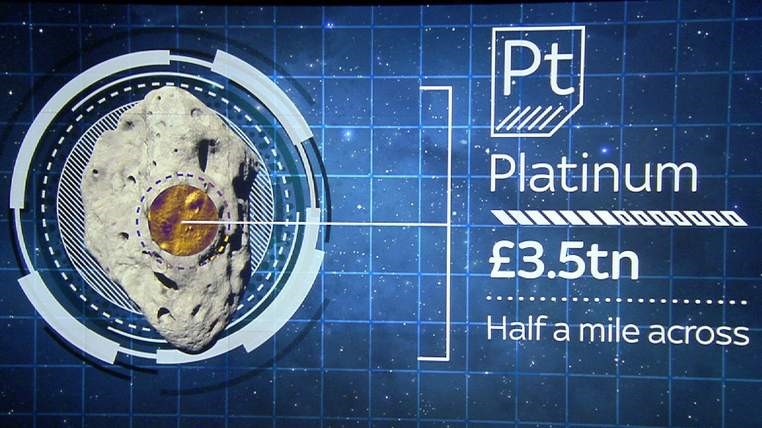
When an asteroid swings past Earth at a distance 30 times closer than our nearest planet, most onlookers sigh in relief, but if you’re in the mining business, well, you just lost $5(£3.5) trillion in potential revenue. On July 19, 2015, the platinum-cored asteroid 2011 UW-158 passed within 1.5 million miles of the Earth, and it won’t return for another three years, giving private mining companies what they envision as “just the right amount of time” to make preparations toward mining it.
Speaking with Sky News, astronomer Bob Berman said, “There's the little matter of the 1967 Space Treaty and almost all countries have signed that saying no nations can claim a celestial body but it doesn't say anything about companies, corporations, firms, private entities.”
In what appears to be the emergence of a new breed of industry, private companies are lining up to seize the asteroid. Just last week, a company called Planetary Resources launched The Arkyd-3 Reflight (A3R) spacecraft from the ISS, in an effort to test the bevy of technology needed for future celestial excavations, including critical electronics, altitude control, power, communications, and avionics systems, as well as the software needed to analyze the mineral compound of the asteroid.
“Our team is developing the technology that will enable humanity to create an off-planet economy that will fundamentally change the way we live on Earth,” said Peter Diamandis, co-founder and co-chairman of Planetary Resources, Inc., in a press release. Formed in 2012 and backed by billionaires such as Google executives Larry page and Eric Schmidt, Planetary Resources seeks to find profitable means of mining near-Earth asteroids for platinum, palladium, and other rare earth minerals.
Once the A3R’s 90-day mission is complete, the firm will begin immediate preparations for its successor, set to launch sometime in 2015 with an upgraded mid-wave infrared imaging system that’s capable of sensing temperature difference and the presence of water or water-rich minerals.
Whatever the case, Planetary Resources has three years to complete the necessary preparations before 2011 UW-158’s return. Should it succeed, we may begin to see the rise of the dystopian future long predicted by science fiction, in which international corporations’ capital far surpasses that of the state.
Source: IEEE Spectrum and Sky News
Advertisement
Learn more about Electronic Products Magazine





